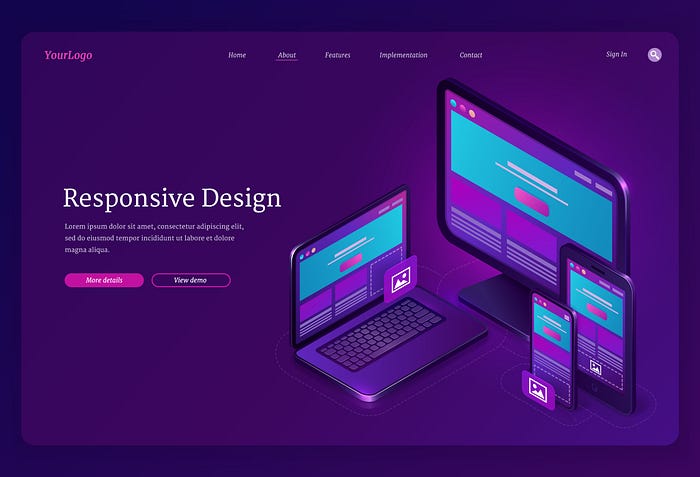
The digital world is overflowing with websites — but only a few truly capture attention. What sets those few apart? Storytelling.
In today’s experience-driven age, web design isn’t just about visuals or usability. It’s about creating an emotional journey that connects with users, builds trust, and inspires action. Storytelling transforms a static website into a dynamic, human experience — and that’s exactly what users crave in 2025 and beyond.
1. Storytelling Builds Emotional Connections
People don’t remember pixels; they remember emotions.
A well-crafted story taps into human emotion and makes users care about your brand. When your design tells a meaningful story — about your mission, your customers, or your purpose — it creates a lasting emotional bond.
Example:
Brands like Apple and Airbnb use emotional storytelling beautifully. Their websites don’t just showcase products — they tell stories of creativity, belonging, and innovation.
Takeaway: Emotion drives engagement. Use storytelling to make users feel something, not just see something.
2. Storytelling Enhances User Experience (UX)
A website built around storytelling provides a natural flow — from curiosity to discovery to action. It guides users step-by-step, keeping them immersed throughout their journey.
UX Storytelling Tips:
- Create a clear beginning, middle, and end in your page structure.
- Use scroll-triggered animations to unfold your story interactively.
- Guide users visually with motion, contrast, and typography.
Takeaway: A story-driven UX design makes navigation feel like a seamless adventure, not a chore.
3. Visual Storytelling Strengthens UI Design
Your website’s visuals are your storytelling language. Colors, typography, and imagery aren’t just decoration — they communicate emotion and meaning.
Design Tips:
- Choose colors that align with your brand’s emotional tone.
- Use high-impact visuals that tell your story without words.
- Keep consistency across icons, layouts, and imagery.
Takeaway: Great UI design doesn’t just show — it tells.
4. Interactive Storytelling Keeps Users Engaged
Static websites are fading fast. Users today want interactive, immersive experiences — where they can explore and interact with your story.
Examples:
- Parallax scrolling that makes pages feel cinematic.
- Microinteractions that respond to user input.
- Motion design that adds personality to the experience.
Brands like Google and Stripe use storytelling-driven interactions that turn complex data into engaging journeys.
Takeaway: The future of web design is participatory — let users be part of the story.
5. Storytelling Makes Your Brand Memorable
Facts inform. Stories stick.
When you build your brand identity around storytelling, users remember your message, not just your logo. It gives your brand a voice — something relatable, authentic, and human.
Example:
Nike’s website tells stories of empowerment, not just shoes. The design, images, and copy all work together to inspire action — “Just Do It.”
Takeaway: A memorable story turns a brand into a movement.
6. Storytelling Simplifies Complex Messages
Some products or services are hard to explain. Storytelling turns complexity into clarity.
By using narrative structure — problem, solution, and success — you help users quickly understand what you offer and why it matters.
Example:
Slack’s homepage tells a story of workplace transformation — from messy communication to seamless collaboration.
Takeaway: Simplify your message through relatable storytelling that focuses on your user’s journey.
7. Storytelling Increases Conversion Rates
When users emotionally connect to your story, they’re more likely to take action. Whether it’s signing up, purchasing, or contacting you — storytelling-driven design builds trust and motivation.
Conversion Storytelling Tips:
- Use real customer success stories.
- Add emotional CTAs (e.g., “Start your journey” instead of “Buy now”).
- Lead users toward conversion through storytelling sections.
Takeaway: The stronger your story, the higher your conversion.
8. Storytelling Humanizes Digital Experiences
In an era dominated by automation and AI, human connection matters more than ever. Storytelling reminds users that there are real people behind your brand.
Human Touch Ideas:
- Share your company’s founding story.
- Highlight your team members and culture.
- Showcase customer stories that feel authentic.
9. Storytelling Creates a Consistent Brand Experience
Storytelling isn’t just for your homepage. It should flow through every touchpoint — product pages, blogs, and even your app interface.
When your story is consistent across all channels, your brand feels unified and trustworthy.
10. Storytelling Defines the Future of Web Design
The future of web design isn’t about templates or trends — it’s about crafting digital experiences that move people.
Designers who can merge visual design, interaction, and narrative will lead the next wave of creative innovation.
Storytelling gives websites depth, emotion, and meaning — transforming them from digital spaces into human experiences.
A professional web designer does more than create a “pretty” website—they build digital experiences that attract, engage, and convert. Let’s dive into why their expertise is invaluable for any business.
1. First Impressions Matter
When someone visits your website, they immediately form an opinion about your brand. A professional web designer ensures your website looks polished, trustworthy, and aligned with your brand identity. Good design builds credibility and confidence, encouraging visitors to stay longer.
2. User Experience Drives Success
A website should be easy to navigate and intuitive to use. Professional designers focus on UX (User Experience) to ensure that visitors find what they need quickly. From logical menus to clear calls-to-action (CTAs), they create a smooth journey that keeps users engaged and increases the chances of conversion.
3. Responsive Design for All Devices
With most traffic now coming from smartphones and tablets, a mobile-friendly design isn’t optional—it’s essential. Professional web designers build responsive websites that look and function perfectly across desktops, laptops, tablets, and mobile devices, ensuring a consistent experience for all users.
4. Optimized for Performance and SEO
Slow-loading websites frustrate users and hurt rankings on Google. Professional designers know how to optimize images, code, and layouts to improve speed. They also structure websites with SEO-friendly practices, helping your business rank higher on search engines and attract organic traffic.
5. Tailored to Your Brand Identity
Every business is unique, and your website should reflect that. Professional designers don’t rely on generic templates—they create custom designs that match your brand voice, values, and goals. This helps your business stand out from the competition.
Conclusion
Storytelling is the bridge between design and emotion. It turns static layouts into living experiences, making users care, connect, and convert.
As web design continues to evolve in 2025 and beyond, storytelling will remain the most powerful tool to engage audiences and build loyal communities.



